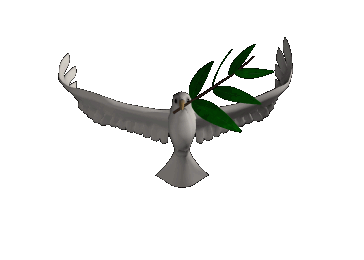Greetings Members, hope your enjoying your Thanksgiving weekend! I have sent birthday wishes to this oh so loved woman from Romania but i have not given her the respectful opportunity to have her show up in the Showcase. Short as it may seem, some members must be on vacation just my luck lol, so i hope you Anamaria and my fellow friends, members here appreciate what you do for us here at Adlandpro along your fellow partners Jim and Peter. You three now have been featured. Anamaria of course hails from Romania."  … why should you go to Romania? The straight answer is because it is one of the most beautiful countries of Southeast Europe." (The Blue Guide) … why should you go to Romania? The straight answer is because it is one of the most beautiful countries of Southeast Europe." (The Blue Guide)
"Few regions offer a more dazzling display of cultural and artistic treasures than Romania." (Smithsonian Journeys)
"Considered by many the most beautiful country in Eastern-Europe, Romania still claims regions that seem bastions of a medieval past long since lost elsewhere."
(Fodor's Eastern and Central Europe)
"Romania has majestic castles, medieval towns, great hiking and wildlife…"
(The Lonely Planet)
"No journey to Eastern Europe would be complete without paying a visit to Romania… Outstanding landscapes, a huge diversity of wildlife…" (The Rough Guide)
Romania offers a rich tapestry of tourist attractions and vacation experiences unique in Central-Eastern Europe: medieval towns in Transylvania, the world-famous Painted Monasteries in Bucovina, traditional villages in Maramures, the magnificent architecture of Bucharest, the romantic Danube Delta, fairy-tale castles, the Black Sea resorts, the majestic Carpathian Mountains, spas and much more.
Foreign visitors consider Romanians among the friendliest and most hospitable people on earth. Romanians are by nature fun loving, warm, hospitable, playful, with an innate sense of humor. 
About 21,700,000 people live in Romania.
Ethnic breakdown is 89% Romanian 7.5% Hungarian, 1.9% Gypsy, German, Ukrainian, Armenian, Croatian, Serbian and Turkish. More than 55% of Romania's population lives in towns and cities.
There are 263 towns in Romania out of which 25 have a population of more than 100,000 while 8 cities count more than 300,000 inhabitants.
45 % of Romanians live in rural areas: 2,868 communes and 13,285 villages.
The administrative divisions are called "judet" (county).
There are 41 counties in Romania.
The capital city, Bucharest, has the status of a county.
Bucharest — the capital of Romania has a population of more than 2,200,000.
Main religions in Romania
Eastern Orthodox 87%,
Roman Catholic 5%
Protestant 5%.
Romanian, a Latin based language which is a continuation of the Latin spoken in ancient times in Dacia and Moesia — the eastern provinces of the Roman Empire.
A 31-letter Latin alphabet is in use.
Ethnic minorities (Hungarian and German) use their own languages in school and civil administration.
Literacy rate in Romania is 98%.
Most Romanians living in towns and cities are able to communicate in English, French or German. In smaller villages only younger people and children speak one or more foreign languages. 
Several religious holidays including feasts of St. John (January 7), St. George (April 23), Sts. Peter & Paul (June 29), St. Mary (August 15), St. Michael (November 8) and St. Nicholas (December 6) are observed throughout the year in rural areas.
It is customary for Romanians all over the country to celebrate their Saint's Name Day (Ziua Onomastica).
Ethnic minorities celebrate their own holidays.
The countryside is the heart and soul of Romania, where peasant culture remains a strong force and medieval life prevails, as it does nowhere else in Europe. A young American couple, researching ancient traditional villages in Europe for post-graduate studies, recently moved in with a host family in Northern Romania in order to document a culture unique in the world. 
People are happy to meet foreign visitors, often inviting them into their homes for a meal and conversation. For a true introduction to Romania's traditional villages, consider a home stay. Rates range from $8 to $25 per person including two meals. Rooms are clean and comfortable but some do not have private baths. Most hosts do not speak English.
While there are great Romanian fine artists, among whom 20th century sculptor Constantin Brancusi is probably the most famous, the typical zest for life and almost naïve optimism that the world is really a beautiful place seem best expressed in the traditional art and craft of Romanian peasants, extending even to their colorful, unique grave markers. In the "Merry Cemetery" of Sapanta, in Northern Romania, carved wooden crosses are painted traditional blue and embellished with fanciful borders, renderings of the deceased and often anecdotes of their lives. As in most parts of the world, full-time artists and artisans are drawn together, tending to form communities throughout the country, where locales are aesthetically inspiring and economically viable. Bucharest and a few of the larger towns boast a few galleries showcasing work from such artist communities, but most don't have galleries. A few examples of local artists' and artisans' work are shown and sold in town museums, but most is sold in street markets adjoining major attractions. Sellers usually are also the makers and some of them speak English. A conversation with them can reveal fascinating facets of Romanian culture. Works of Brancusi are in various locales, but one of the finest collections is in the city of Targu Jiu, in Oltenia province on the southern border of the Carpathian Mountains. Nearby Horezu is a major centre for ceramics, wood-carving and iron forging and the Horezu Museum of Art showcases some of the best work of past and contemporary artists.
The most readily recognizable examples of Romanian art are the famed painted eggs, especially prominent around Easter time. Painting of real hollowed-out eggs was an integral part of preparations for this festival of renewal. Women and children gathered in someone's home and spent a day painting and gossiping. Intricate patterns were actually secret languages known only to residents of the regions where they were painted. The oldest known were painted with aqua fortis (nitric acid) on a traditional red background. They're available in nearly all shops and street markets.
Romanian pottery is still made mainly on traditional kick-wheels with simple finishing tools. Shapes, sizes and patterns reflect the different clays and cultures of diverse areas where are produced. Color glazes and decorations vary from strong geometrics, to delicate florals, animals and humans. There are approximately 30 pottery centres throughout the country, each with its own distinctive style, but the main areas are in Horezu in Oltenia, Corund in eastern Transylvania and Radauti and Marginea in Moldavia.
Maramures is the area to see the art of woodwork. Homes are trimmed in elaborately carved wood, wooden gates and even fences are intricately carved. Historically, in this area, a family's community status was displayed through the gate — the more elaborate, the more important the family. The "Merry Cemetery" of Sapanta is in this region, open all year long, at all times — it's well worth a visit. Hand-carved decorations in complex patterns hold meanings beyond the purely decorative. Trees of life, twisted rope, moons, stars, flowers and wolf teeth to ward off evil spirits are associated with myths and superstitions. They show up in furniture, spoons, ladles, walking sticks, keepsake chests and other decorative objects, sometimes embellished with paint. Wooden flutes and recorders are also elaborately carved. Most prized are the multi-piped pan flutes, which are now very rare, as few artisans know how to make them and even fewer know how to play them. 
At the edge of the street market adjacent to Bran Castle is a peasant cottage with a window behind which an old woman sits at her loom weaving and watching the passing scene. She'll invite interested visitors into her home, where her English-speaking daughter will explain that she's 74 years old and has been weaving since she was seven. She still weaves with thread she spins herself from sheep her family keeps in their tiny enclosed courtyard. On view in her tiny weaving room, which is also her bedroom, is a selection of magnificent throws and spreads that she has woven. Not for sale, they're priceless examples of this enduring way of life.
Textile weaving is the most widespread craft in Romania, handed down from generation to generation, using distinctive family patterns along with those specific to different districts. Looms still are common in homes and women weave and embroider from childhood through old age. The predominant fibers, wool and cotton are woven into rugs, wall hangings, table covers and clothing. Some Romanian weavers and embroiderers still work with threads and yarns they produce themselves, but younger weavers tend to purchase their raw materials. They weave and embroider just about every cloth article used in their homes, from colorful linen and cotton towels to window draperies, bedspreads, rugs, wall hangings, furniture throws and clothing. In a village near Sibiu, part of a bride's dowry is still a tolic, used to decorate horses of those who ride from house to house issuing wedding invitations.
Embroidery on folk costumes worn for holidays and special occasions (like weddings) follows strict regional patterns and serves also as a sort of secret language known only to people within the different regions. Sibiu uses graphic black and white motifs, reflecting its Saxon heritage; southern regions of Arges, Muscel, Dimbovita and Prahova use red, black maroon, yellow, gold, and silver threads, reflecting influences of the Ottoman Empire. Buzau uses terra cotta; Oas uses green and Moldavia uses orange and the Voronet blue made world-famous by its use on the monastery of the same name. Especially beautiful is cut embroidery on white or ecru linen and cotton, done throughout the country. WE LOVE YOU ANAMARIA :)  Greetings From Romania! Greetings From Romania!
I'm Ana Maria, mother of two grown up children: Ramona 21 and Alex 18, and the wife of my husband! Would you believe that? :-) We are very well together as my heart stacked somewhere between 25 and 30, and I can enjoy life now like than, along with my kids! My husband has no choice :-)) Of course I'm kidding, he's a great person too. I love him very much.

glitter-graphics.com
For me true friendship has a great value. I enjoy meeting people from different parts of the world, from different cultures with different habits.
I like jokes, music, sports, animals, and people; not necessarily in that order.
I graduated as a chemical engineer and during 14 years managed to become a research scientist, which was the dream of my collage years but things changed radically over here and my life road led me to a completely different direction ... for several years working in Life Insurance, Financial Planing, client service management, trainings and other things like this, as almost all our chemical industry is gone with the wind. Now, after a long time I feel again entirely pleased with what I'm doing; I'm the manager of an International Clinic's newly opened Branch in Oradea.
About my business interests...see my profile. Though, I have to confess that the most I like online is Adland and its Community! I have so few time left even for this that I really do not have time for anything else with the internet.
If you want to know me better, here are a few places where you can read more ABOUT ME, and I'll post the links here in a short time, and till than, feel free to contact me anytime; I'm here and you know how to find me.
All the best to you, Anamaria http://community.adlandpro.com/forums/333534/23/ShowThread.aspx
|